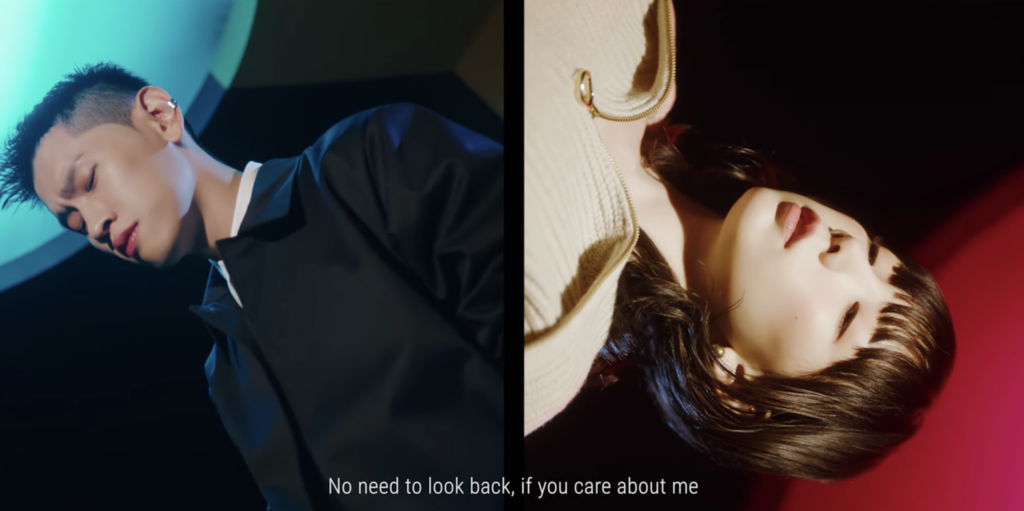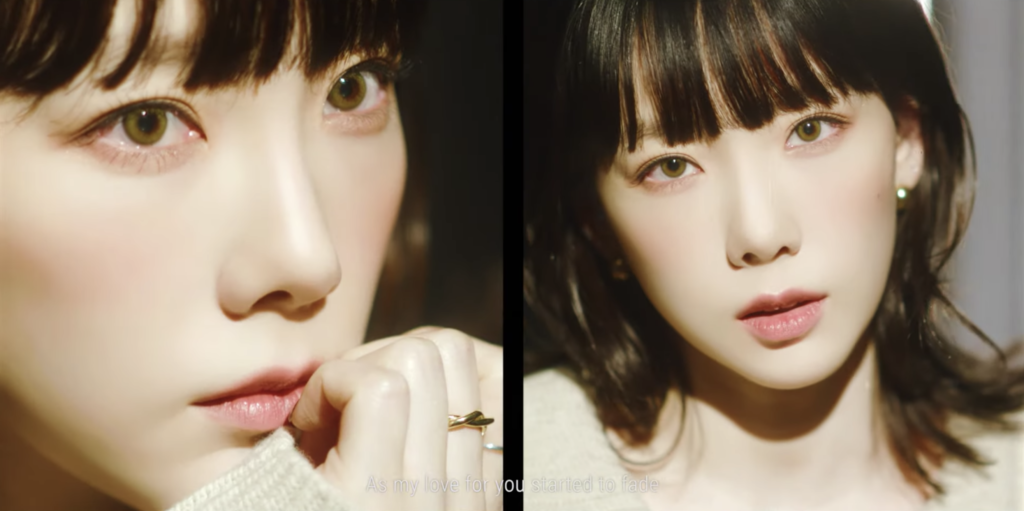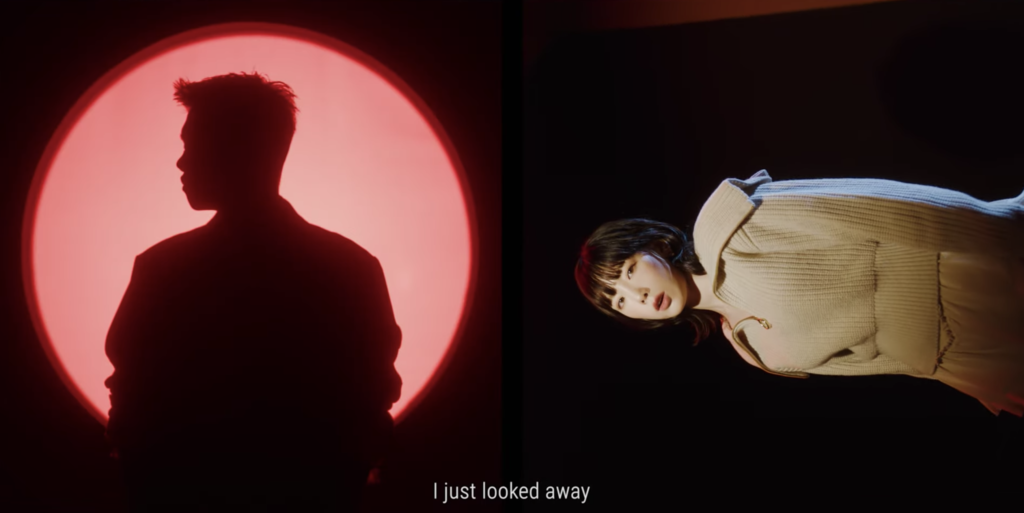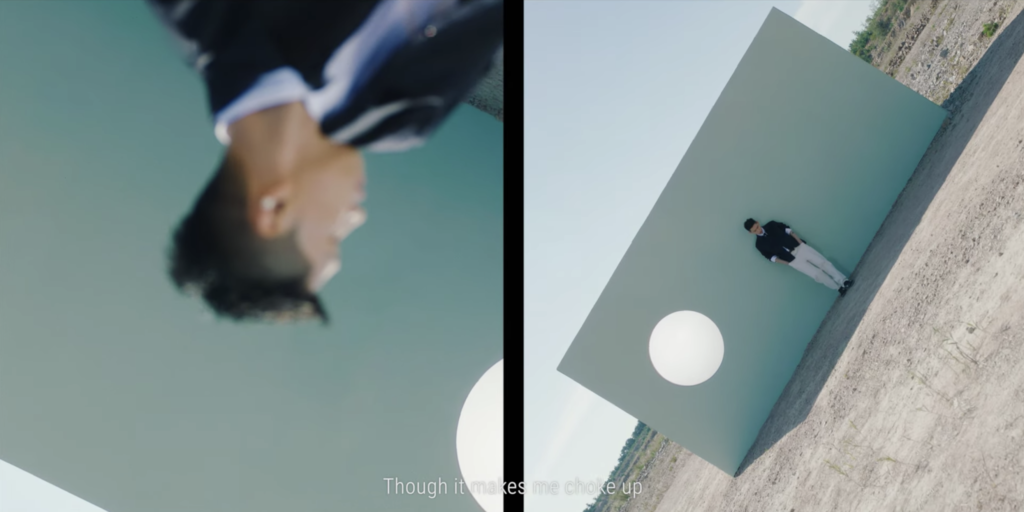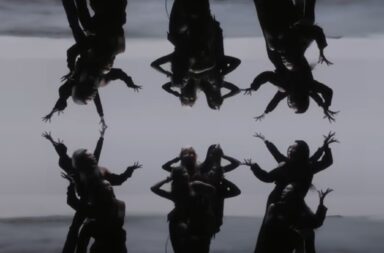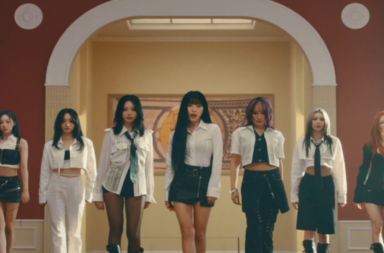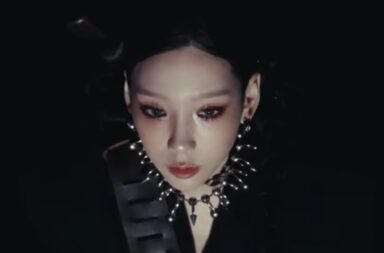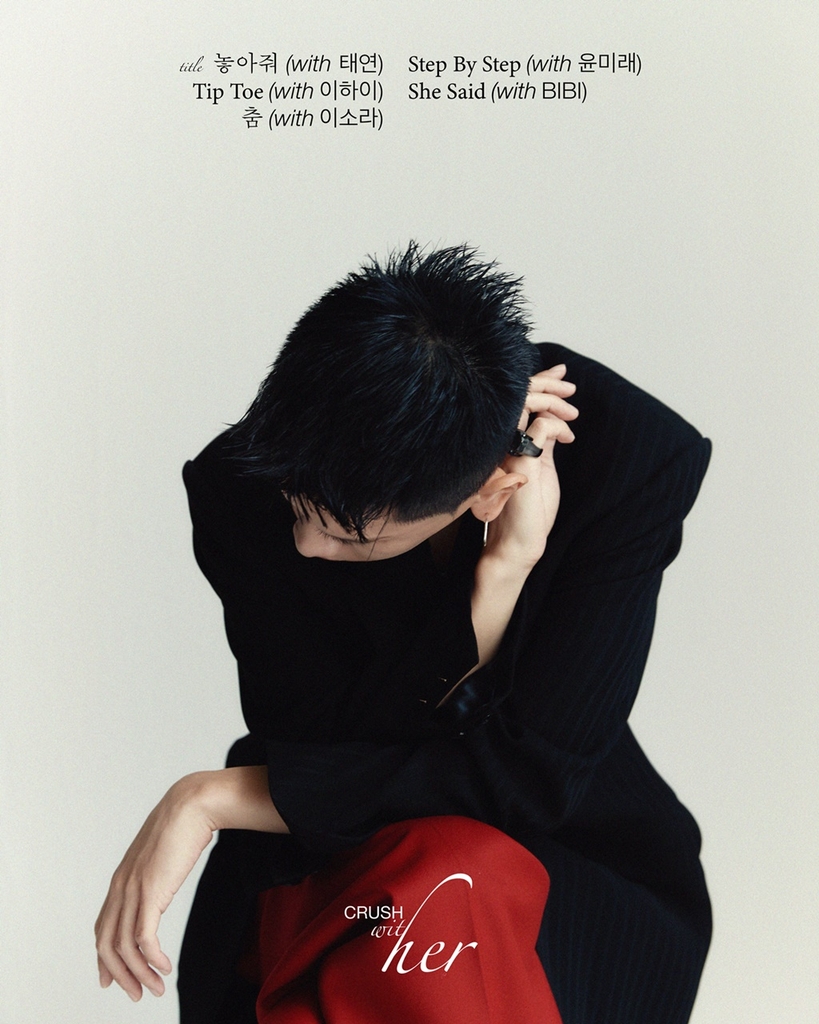
It’s beyond difficult to simply box Crush into one category or genre of music. Over the course of his eight years as an artist – starting from “Red Dress” in 2012 and his contribution to Loco’s 2013 single “No More,” he has since then branched out into multiple genres, instrumentals, and styles. Picture his debut studio album Crush On You next to last year’s musical masterpiece From Midnight to Sunrise. Or juxtapose “Nappa” with singles “Outside,” “2411,” “Digital Lover,” or even “Castaway” (feat. Miso). Not to mention his featuring in Simon D’s “Make Her Dance” or Jay Park’s “Mommae” remix has you questioning if it’s the same singer that croons over heartbreak and love for Goblin’s OST “Beautiful.”
With every consecutive release since debut, Crush has expanded his boundaries as an R&B singer, knowing no end to his musicality. From dabbling in ballad, pop, soul, and even a capella, every work has provided a pleasant surprise for fans to indulge in a new direction he has ventured.
Thus, a timeline has been created throughout his discography. His earlier works relied more on loud, saturated production to create catchy hip hop, R&B tracks that grab our attention. Whether slow or fast-paced, sensual or upbeat, Crush mostly experimented with familiar, old-school takes to these genres. “Oasis” and “Outside” took things to a more modern scale, as Crush dabbled in summer pop to refresh the heat with – while “Young” with Zion T and “Don’t Forget” with Girls’ Generation Taeyeon brought out his more somber, reflective side.
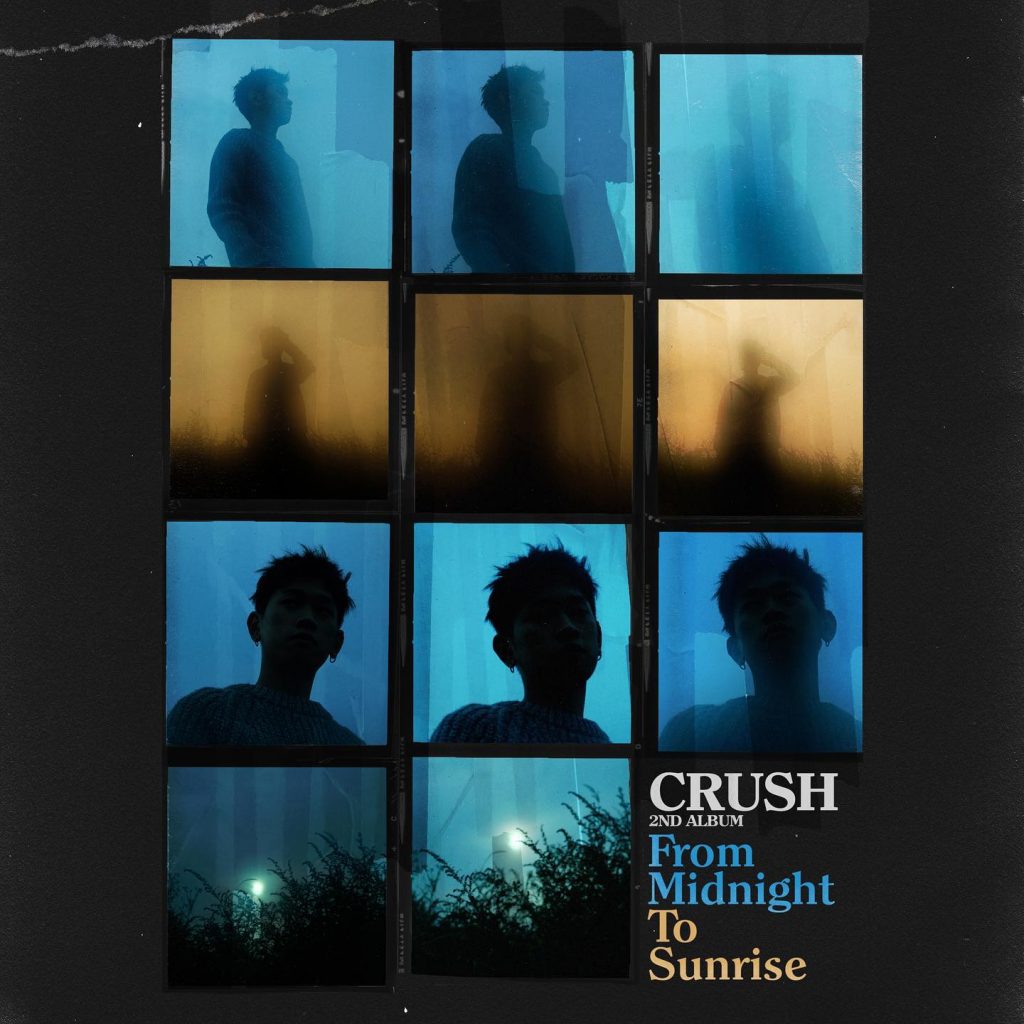
Further classic EP releases shone light on this experimentation, along with From Midnight to Sunrise, which revealed his venture into more muted, threadbare tracks, bringing attention solely to his voice. Instrumentals took a backseat to provide more of the mood necessary to enjoy each track as the album dwelled on the transition from dawn to nighttime. A clever execution in style and idea, the album brought to the surface his underlying process to maturation: with R&B, jazz, and more combined with acapella to showcase a voice so smooth and buttery.
Now fast forwarding to 2020, it’s his last EP released prior to enlistment.
HER — and its title track “Let Me Go” — is further evidence of Crush’s maturity as an artist today. Collaborating with Taeyeon four years after “Don’t Forget,” their second collaboration is reminiscent of their first duet’s wistful, yet bittersweet vibes. If “Don’t Forget” touched on maintaining their memories even after their breakup, “Let Me Go” dwells on asking to be let go and forgotten first, for the sake of the falling relationship.
Essentially, Crush now expands on the other side of the coin, where leaving and forgetting may be the better option. The two singers delicately explore this duality of fading love and hope, as they come to the conclusion to separate despite the obvious toll it’ll take to do so.
On that note, the MV does an incredible job in portraying this very message, utilising minimal yet powerful symbols; a moody film lens and an emphasis on eye contact and proximity highlights the subtly emerging isolation.
While the surrounding environments themselves are quite simple, they change into artistic avenues through shapes, colors, and juxtaposing angles of filming. During Crush’s initial solo verse and chorus, for example, he leans against a sky blue wall with a white circle — most likely representing the sun and sky. This is in strict contradiction to the MV’s opening, where Crush’s backdrop is a yellow wall with a circular window.
The transition from warm to cool colors is further evident when contrasting the start and end of the MV: where Crush begins in a bright surrounding, and Taeyeon picks up the torch with darker skies. In the end, the two face off in opposite directions, with a black sky that clearly signals the end of the day, as well as their journey together. Moreover, during separate profile shots, the light behind Crush is sky blue, while Taeyeon’s is red. This can mean multiple things, such as their opposing fates, personalities, or perhaps even their stance on this relationship. Blue is often associated with calmness or sadness, while red can symbolize passion or anger.
This duality, then, holds hands with colors’ symbolism in order to portray multiple lens to this message. However, the duality also presents itself through direction. Both Crush and Taeyeon’s profile shots are often doubled, with Taeyeon’s front and side shots juxtaposed, or Crush filmed upright and upside down.
But rather than looking towards each other, each frame contains a shot of either singer looking elsewhere. One particular standout moment is found specifically at the 2:04 mark, where, as Taeyeon sings “I just looked away,” the other half of the screen shows Crush’s back illuminated by pink. Showing these two shots simultaneously gives viewers a glimpse into Taeyeon’s perception within the story that is being told. But it is further resonant because the figure is of Crush, perhaps signaling that Taeyeon having looked away already foretold his leave.
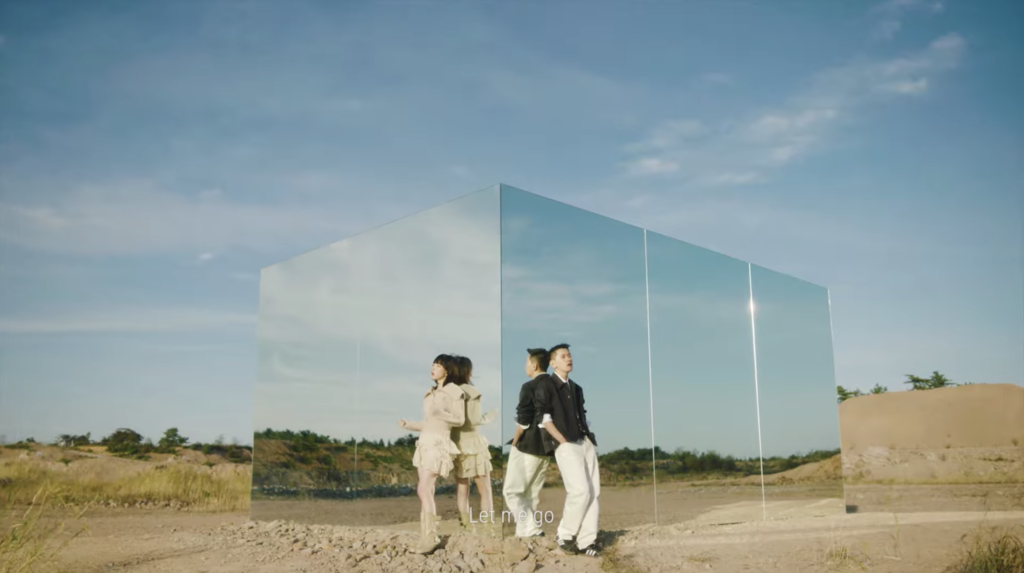
Another scene that showcases a minimal yet impactful way to portray separation is found when both singers are leaning against a glass backdrop. Considered the epitome of reflection, glass is brilliantly utilized to show contrast.
If the camera is capturing Crush and Taeyeon looking separate ways, the mirror contains the opposite: of what had once been. In this case, viewing the mirror is the same viewing the lens to past memories, prior to walking off into a new reality. It seems like the same environment — same sandy hills, with a pale blue sky — but with one subtle change, everything is now different. In these regards, the details drawn to these factors: color, duality, and directions (or reflections) play a huge part into heightening the bittersweet, yet wistful atmosphere present through the song itself.
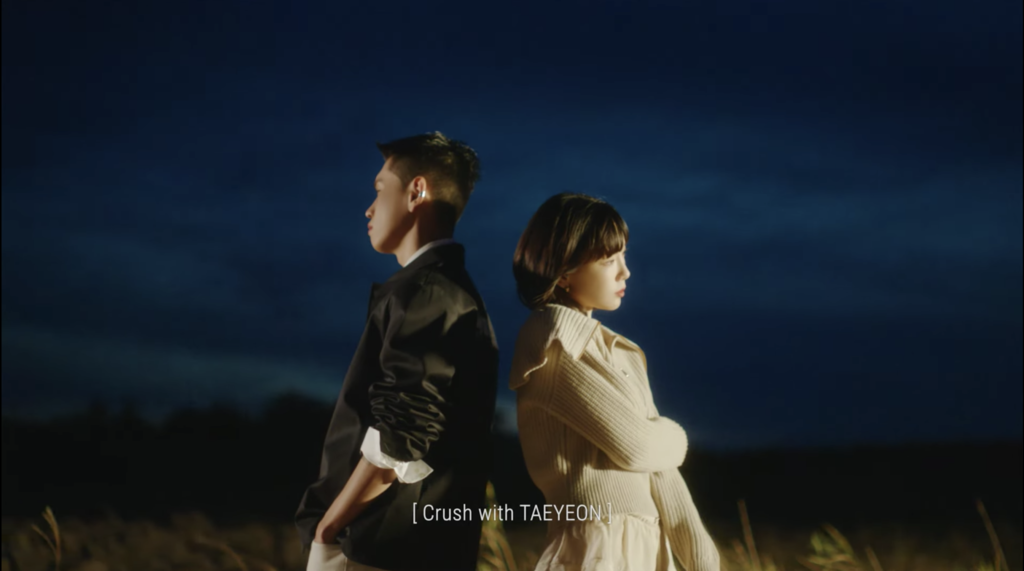
By this point you may have recognized I left out a crucial part: the film effect that is the cherry on top to all of these separate ideas.
Suffice to say, this final touch was an excellent frame choice to create the atmosphere they were aiming for. After all, the closeness of the frames are as close as the separate lovers could get; the subtle distance and growing isolation grows all the more apparent, despite what we see at face value. The rustic color scheme and square frames further helped make the creative vision come alive, and so did the subtitles. Not only was it a considerate nod to international fans, but the stylistic choice for these resemble old film screen caps (particularly due to the well chosen font). The intention is clear, as — by the end — the subtitles ironically read “[Crush with TAEYEON]” – bleakly suggesting an ending where they are anything but.
Overall, this was a very impressive comeback with plenty of artistic cues to have us dwell on “Let Me Go” long after it ends. Crush continues to outdo himself and raise the bar on the quality he can provide as an artist, and his collaboration with Taeyeon helped create a distinct, one-of-a-kind production. To our readers, what did you think of Crush’s latest music video? Let us know in the comments below!
(YouTube. Images via P NATION)
